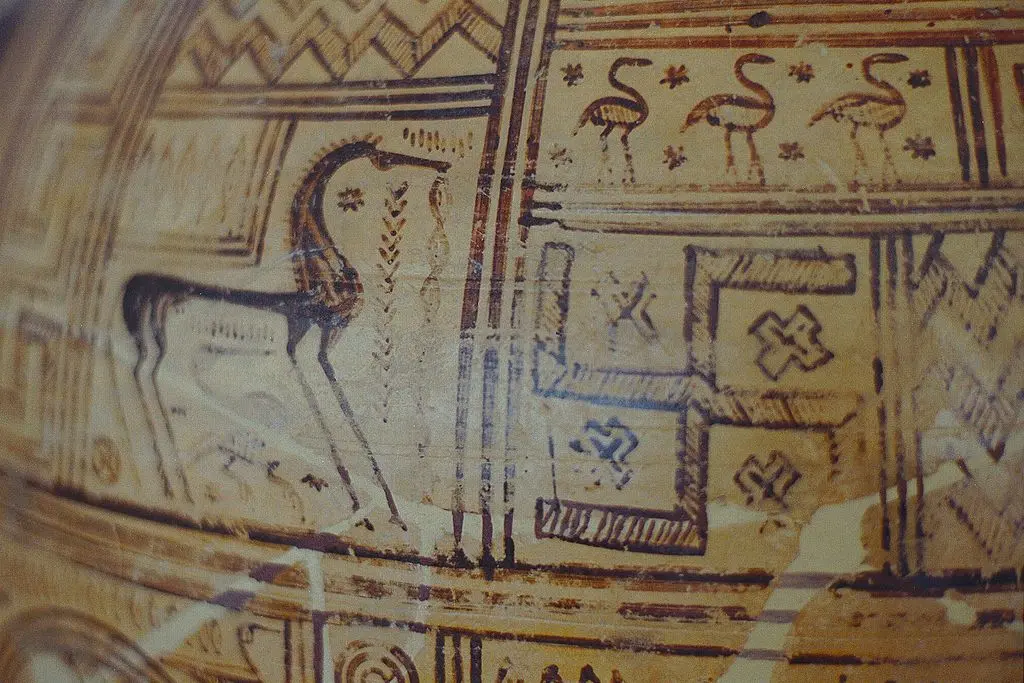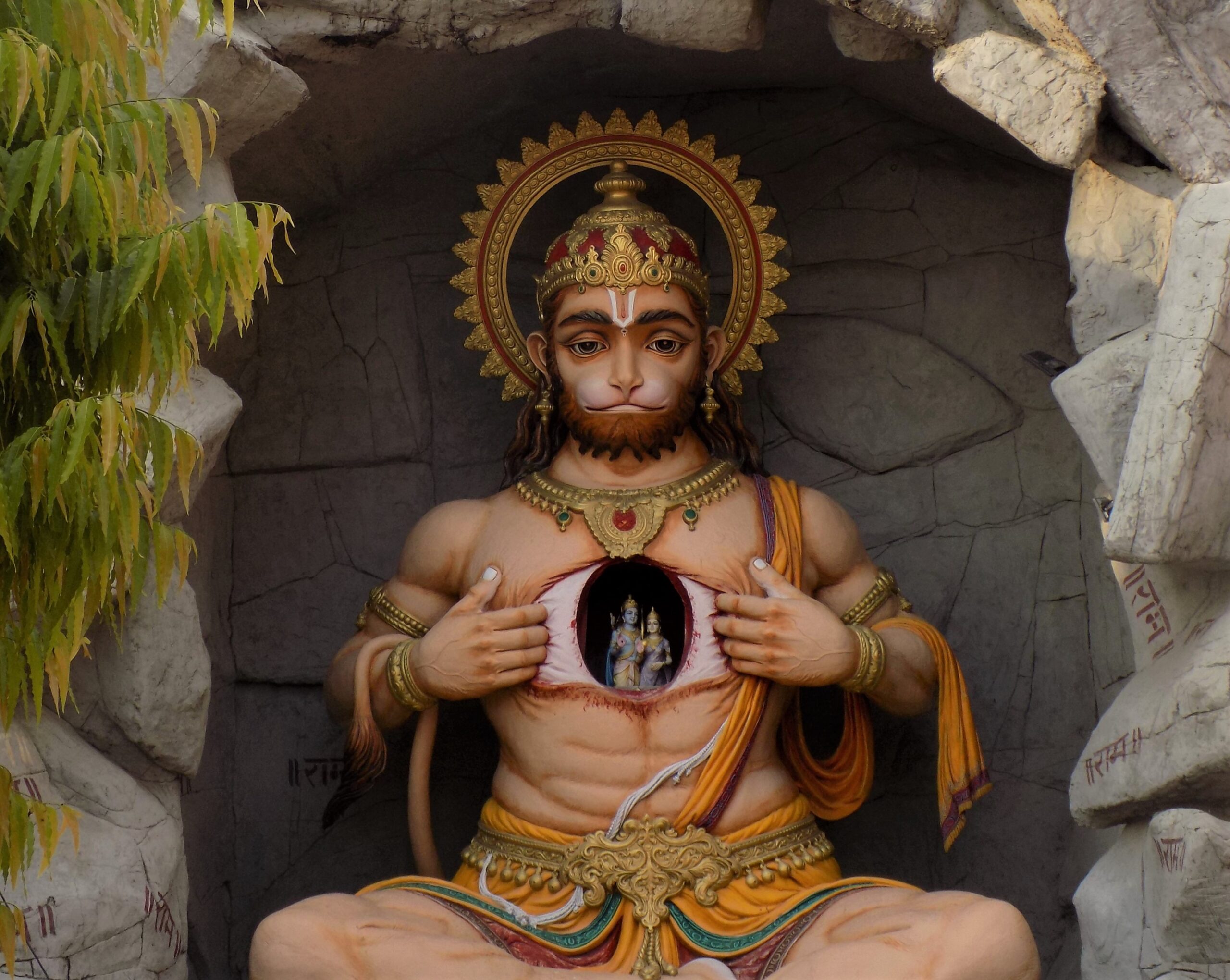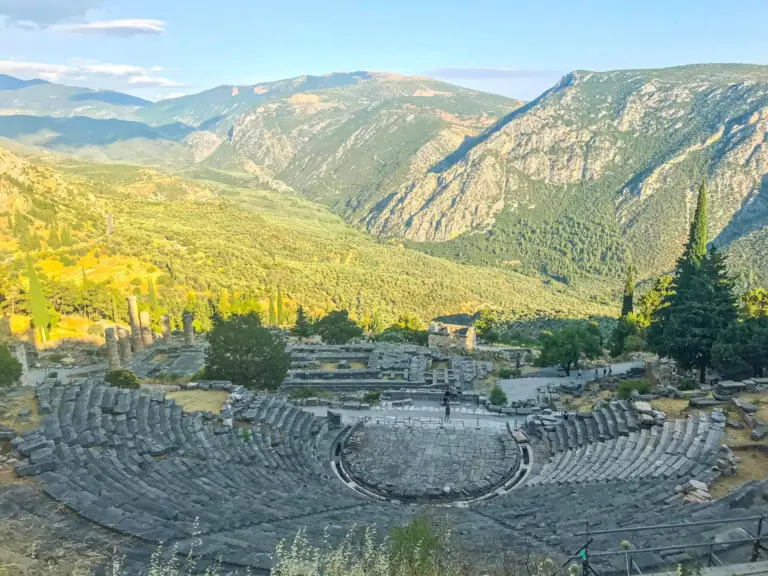In our world filled with symbols, the Swastika stands out, not just because of its simple and striking design, but also due to the dichotomy of meanings it has come to represent.
What was once a symbol of well-being, prosperity, and good fortune, used across numerous cultures and religions for thousands of years, has, in the past century, become a symbol of bigotry.
It’s like seeing a beautiful rose somehow getting associated with venom – bewildering, right?
That’s why I feel like it’s so important for us to understand the true history and meaning of the Swastika, to appreciate its original significance, and realize how it has been wrongfully appropriated. To be honest, I was a bit afraid writing this article but cultural awareness is what my blog stands for so I’m just gonna go for it.
With a bit of a history lesson, some cultural context, and a lot of empathy, let’s unravel the true story of the Swastika.
Table of Contents
Toggle
The Origins of the Swastika Symbol
Long before the Swastika was associated with hate, it was actually a symbol of harmony, prosperity, and good luck. The Swastika is not owned by any single culture, rather it’s a truly universal symbol with an antiquity that is mind-boggling.
We’re talking thousands of years here. Stone Age artists in Europe were carving Swastikas onto ivory figurines as far back as 10,000 years ago. In the ancient city of Troy, archaeologists have unearthed artifacts adorned with Swastikas dating back to 3000 BCE!
The symbol seemed to travel, too. It was embraced by cultures and civilizations far and wide, from the ancient Greeks and Romans to the Celts.
It was used by early Christians and was found in Jewish synagogues. It was known to Native Americans, and even reached the far east, making its presence known in China, Japan, and Korea.
However, it was in the Indian subcontinent that the Swastika found a particular spiritual resonance. The symbol is etched into the soul of Indian spiritual traditions such as Hinduism, Buddhism, and Jainism.
In Sanskrit, “swastika” means “well-being”. For these cultures, it symbolizes the eternal nature of the universe, the continuing creation and destruction of the universe, prosperity, and good luck.
The Swastika’s ancient journey, across cultures and centuries, is truly astonishing, reminding us of its original significance: a positive and spiritual symbol.
The Swastika Symbol in Eastern Cultures

What Does the Swastika Mean in Buddhism?
In Buddhism, the Swastika is seen as an auspicious mark, symbolizing good fortune, prosperity, and abundance. It’s often placed at the beginning and end of Buddhist scriptures, acting as a visual bookmark of sorts, encapsulating the entire journey of the teachings.
The Swastika is also viewed as a representation of the Buddha himself. It’s almost as if the Buddha left us this symbol as a reminder of his eternal presence. This is one reason you’ll often find the Swastika symbol in Buddhist art and architecture, embellishing statues of the Buddha and adorning the walls of temples.
In terms of its directional orientation, the clockwise (right-facing) Swastika is used in Buddhism, often associated with the Buddha’s footsteps and the endless cycle of birth and rebirth – Samsara.
Just imagine, each time we come across a Swastika in a Buddhist context, we’re basically meeting the Buddha! How cool is that?

What Does the Swastika Mean in Hinduism?
For Hindus, the Swastika is also seen as a sacred symbol of auspiciousness and good fortune. It’s not uncommon to see the Swastika being drawn at the entrance of Hindu homes, in wedding ceremonies, and during festivals like Diwali.
The gesture is believed to invoke divine blessings and ward off evil spirits. In the photo above, you can see Lord Ganesha above the Swastika with the sacred Om symbol in the center. There’s also an Evil Eye at the other corner which is another symbol used for protection.
The four arms of the Swastika are often interpreted to represent the four goals of human life according to Hinduism – Dharma (righteousness), Artha (prosperity), Kama (desire), and Moksha (salvation).
The Swastika is associated with Lord Vishnu, one of the principal deities of Hinduism, and it is believed to be a symbol of the Sun’s rays, denoting life and energy.
The clockwise symbol is a representation of the sun’s course in the heavens, moving in the “right” direction, and stands for the cosmic eternal laws of Brahma.
In Hinduism, the Swastika isn’t just a symbol—it’s a sacred emblem, encapsulating life’s deepest goals and the very rhythm of the universe.
What Does the Swastika Mean in Jainism?
In Jainism, the Swastika is a symbol associated with the seventh tirthankara (spiritual teacher), Suparshvanatha.
Jainism uses the Swastika to depict the four states of existence that a soul can pass through in its journey towards liberation: Heaven, Hell, Human, and Flora or Fauna.
The four arms of the Swastika are used to represent these four realms. Each arm is also linked with a Sanskrit word: “sukh” (pleasure), “dukh” (pain), “labh” (profit) and “samvar” (spiritual progress). The dot in the middle represents liberation from the cycle of birth and death – the ultimate goal in Jainism.
During the Paryushan, the most important annual holy event for Jains, the Swastika is an integral part of the Samayika ritual, a practice aimed at promoting spiritual reflection and personal purification.
As you can see, even in Jainism, the Swastika is far removed from any negative connotations, and instead, symbolizes a complex philosophy of life, death, and spiritual elevation.

What Does the Swastika Mean in Japan?
In Japan, the Swastika – or manji as it is known locally – is an ancient sign, existing in the country even before the introduction of Buddhism. With the arrival of Buddhism in Japan, however, the Swastika became even more widely recognized and used.
In Japan, it’s typically seen in two forms – the left-facing (called omote manji) and right-facing (ura manji).
- Omote Manji: Symbolizes love and mercy and is often associated with the Buddha of Infinite Light (Amitabha or Amida in Japanese).
- Ura Manji: On the other hand, represents strength and intelligence and is often linked to the Buddha of Wisdom (Manjushri or Monju in Japanese).
I’ve also seen a lot of tourists get confused seeing the Swastika symbol around Japan.
Let me clarify it for you:
The Swastika is also commonly used on Japanese maps to denote the location of a Buddhist temple. However, in recent years, with the rise of global communication platforms and to avoid misunderstanding, there have been discussions about replacing the Swastika symbol on international versions of maps with a universally recognized pagoda symbol.
Just shows you how much the world is still changing.
The Swastika Symbol in Western Cultures

What Does the Swastika Mean in Native American Cultures?
Among Native American cultures, its use predates contact with Europeans and it is found in a myriad of different contexts, from pottery and rugs to sacred rock carvings.
- The Hopi: Residing in the southwestern part of the United States, are known to use the Swastika in their artwork and sacred ceremonies. For the Hopi, the Swastika represents the wandering Hopi clans and their migrations throughout the four corners of the earth. It’s a symbol of their connection to the sun, as well as to life’s cycles and creativity.
- The Navajo: Another prominent tribe from the American Southwest, use the Swastika in their intricate weavings and sand paintings. As the photo above states “May the four winds from the four corners of the heaven, ever upon you gently blow.” The dream catcher I have is actually made by the Navajo tribe and the dream catcher itself comes with its own set of interesting legends, click the link above to learn more!

What Does the Swastika Mean in European Cultures?
In Europe, long before the dawn of Christianity, the Swastika symbol was found in many pagan cultures.
It’s seen in artifacts from the Celts, Greeks, Romans, Germanic tribes, and even the early Slavic cultures.
- Ancient Greeks: The Swastika was used in various artistic motifs, appearing on pottery and coins. It was known as the “gammadion” due to its resemblance to four Greek gamma letters joined together. It’s thought to have symbolized the movement of the sun or the “wheel of life.”
- Germanic Tribes: Which include the Norse, the Anglo-Saxons, and the early Goths, used the Swastika symbol extensively in their art and rune stones. It was known as the “fylfot,” and it might have represented Thor’s hammer, Mjolnir, connecting it with protection and blessings.
- Slavs: The Swastika, or “kolovrat,” represented the Sun god, Svarog, and was a symbol of the perpetual cycle of life, death, and rebirth.
- Celts: It’s believed that the Swastika represented the four cardinal directions and the four elements, making it a symbol of balance and harmony between the forces of nature.
The Corruption of the Swastika Symbol
When people in the Western world see the Swastika today, they almost invariably associate it with the horrors of the Nazi regime.
The National Socialist German Workers’ Party, more commonly known as the Nazi Party, adopted the Swastika (or Hakenkreuz in German) as its emblem in the 1920s. The symbol was chosen by Adolf Hitler himself who was intrigued by the anti-Semitic and Germanic supremacist teachings of scholars such as Guido von List and Lanz von Liebenfels. They contended that the Swastika was a symbol of Aryan purity and power.
To the Nazis, the Swastika became a symbol of racial purity, nationalistic fervor, and Aryan identity. It was embedded in the party’s flag, adorned uniforms, marked government buildings, and even found its way onto the tail fins of German aircraft during World War II.
The impact of this nefarious appropriation was immediate and catastrophic. The Swastika, once seen as a symbol of good luck and prosperity, was transformed into a symbol of hatred, intolerance, and genocide.
After World War II, displaying the Swastika was banned in many countries, and it remains a criminal offense in some places to this day.
The Swastika Symbol Today
Today, the Swastika continues to hold a significant role in Eastern religions despite its misuse in the West.
In many Eastern cultures it remains a powerful spiritual symbol. It is frequently found in temples, used during religious festivals, and featured in religious art and architecture as you have seen throughout this article.
In recent years, there has been a movement to reclaim the Swastika, emphasizing its peaceful origins.
However, reclaiming the Swastika is undoubtedly challenging due to its strong negative associations in the West. The horrors of the Holocaust left an indelible mark on the symbol, making it a taboo in many Western societies.
Some argue that the pain it evokes, outweighs its ancient history and spiritual significance. What do you think?













